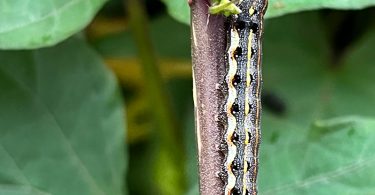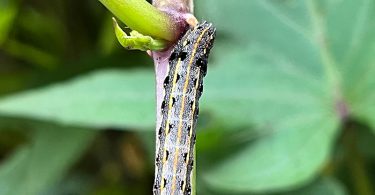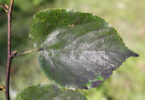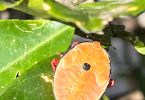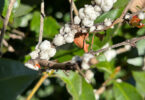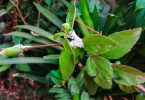Botanical name
Spodoptera litura
Common name
Tobacco Cutworm, Cotton Leafworm
Tobacco Cutworm identification
The Tobacco Cutworm larva varies in colour and size based on its age. Younger larvae are a lighter shade of green whilst older larvae mature to a darker green or brownish colour. Distinctive yellow stripes along the side of the caterpillar is a telltale feature of the larvae, as is a thin orange stripe along the top. The larvae are hairless.
Tobacco Cutworms are nocturnal therefore the larvae feed at night (although the odd one can be seen feeding during the day). In daylight hours, they can usually be seen on the soil around the attacked plant. These caterpillars curl up when disturbed.
The nondescript adult moths are around 3cm long with a greyish-brown coloured body. The patterned forewings are also varying shades of grey or brown and the hindwings are greyish-white with a darker grey outline.
Damage caused
The larvae will devour foliage causing severe damage if left untreated.
Plants attacked
A variety of plants are attacked including tobacco, cotton (hence the name), soybean, tomatoes and cabbage. The Tobacco Cutworm pictured above was feeding on a Sweet Potato plant.
Organic pest control
DiPel can be applied. Although the larvae have natural predators, they do not work fast enough to prevent serious damage. If you don’t mind squishy creatures, they can also be hand picked from the base of the plant during the day or from the actual plant at night.
Chemical pest control
Years ago Carbaryl was suggested as a chemical control although I would not recommend the use of any chemical control.





